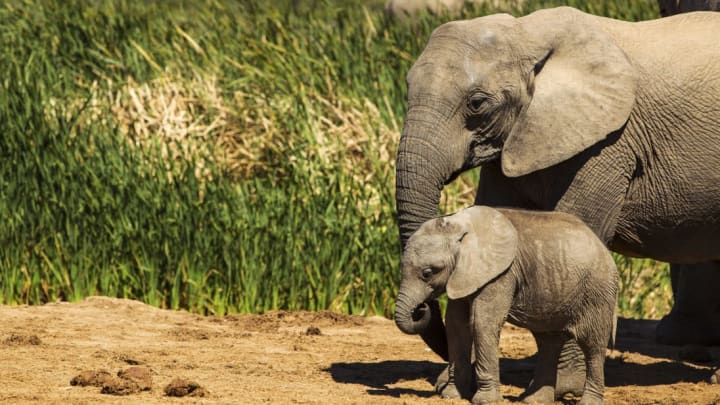Natural selection can take millions of years to shape a gene pool, but in parts of Africa, the extreme pressures of poaching may have changed elephants in just a few decades. As National Geographic reports, more tuskless elephants have emerged in regions where their ivory has made them a target.
Elephant poaching has long been in a problem Africa, but the crisis reached a fever pitch during Mozambique's 15-year civil war. Between 1977 and 1992, 90 percent of the elephants living in the country's Gorongosa National Park were slaughtered for ivory used to fund the conflict.
The diminished numbers aren't the only thing that looks different about Gorongosa's elephants today. Poachers often kill male elephants first because they have bigger tusks, and once they're eliminated, the hunters will go after females. Typically, about 2 to 4 percent of all female African elephants never develop tusks—but among female elephants that survived Mozambique's civil war, that number is 51 percent. The effects of poaching can also be observed in the next generation. Roughly 32 percent of female elephants born after 1992 are tuskless.
The trend can be seen in other parts of Africa where poaching has ravaged elephant populations. In Ruaha National Park in Tanzania, elephant behavior researcher Josephine Smit has observed that over one fifth of female elephants older than 5 years lack tusks. Tusklessness rates reach about 35 percent in females over 25.
The statistics are even harder to ignore in South Africa's Addo Elephant National Park, where tuskless animals made up 98 percent of all female elephants in the early 2000s. South Luangwa National Park in Zambia, Lupande Game Management Area in Zambia, and Queen Elizabeth National Park in Uganda each reported higher-than-average rates of tusklessness immediately following the ivory wars of the 1970s and '80s.
Though poaching is on the decline thanks to bans on the ivory trade and other conservation efforts in Africa, its impact can still be felt. In East Africa, the elephant population was nearly halved between 2008 and 2018. The establishment of wildlife preserves, DNA tracing, and GPS tracking are just a few of the ways conservationists are working to crack down on poachers and restore the species.
[h/t National Geographic]
